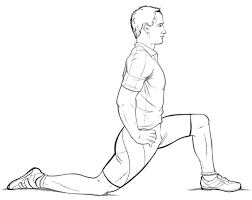We grew up with the generally accepted notion that you NEEDED to stretch before an activity. This was super important to help keep us healthy and injury-free. The more we stretched the less injuries we would get, right?
Fast forward to 2023 and the thinking has changed substantially over the years. Do some people still promote stretching before activity? Absolutely. Is this the correct thing to do? Likely not.
To help us understand the discussion a little better we need to define a couple terms. There is more than one type of stretching that an individual can do. These generally fall into one of two categories – static stretching or dynamic stretching.
Static stretching does not achieve much, if any, of these goals. There is some evidence that static stretching can help “loosen” the muscles by increasing the length of the muscles before activity. However, it does create much in the way of warmth so the muscles remain in their “cool” or normal state. Static stretching involves holding a position for a length of time which is the opposite of what activity is, so therefore it does not prime the muscles and joints for action. It primes them to be stationary in one position.
Dynamic stretching creates warmth. Because it involves the use of repeated movements, dynamic stretching helps improve blood circulation, leading to increased tissue temperature. This aids the theory of “everything moves better when it is warm”. Think of silly putty as an example. Would it move and stretch easier if it was warmed up in your hands first or if you just took it out of the fridge?
The key with dynamic stretching is that the movements we choose need to be specific to the activity we are about to perform. For example, the dynamic stretching before golf is much different than the dynamic stretching before running. The specificity of these movements helps prime our muscles, joints, and most importantly, our nervous system for the activity we are about to perform. Our body essentially “practices” the movements we are going to perform in our activity.
Remember – “practice makes perfect!”
Research over the past number of years has shown that static stretching before and activity can lead to a decrease in maximal strength, power, and performance. On the flip side, dynamic stretching has been proven to increase maximal strength, power, and performance.
So, should we abandon static stretching altogether? No.
Static stretching is still important to help improve muscle length over time. By doing it on a consistent basis, you can increase the range of motion of a joint and the extensibility of your muscles. It is also an important part of cool-down after activity. Static stretching helps prevent post-exercise soreness and cramping of muscles.
To see some examples of dynamic stretching exercises check our YouTube videos at the following link:
Videos - Donald Physiotherapy
If you have any questions about stretching or want to know what are the most appropriate stretching exercises for you, our team of physiotherapists and kinesiologists would be more than happy to help you out.





 RSS Feed
RSS Feed